Dressing the Deceased: Guidelines for Open Casket Attire
Honoring a loved one’s memory is one of the most meaningful ways to celebrate their life. This can take many forms—sharing heartfelt words, choosing a favorite song or poem, or cherishing personal mementos. One of the most personal and lasting decisions, however, is selecting what they will wear for an open casket viewing. This choice is not only a reflection of who they were but also an enduring memory for those who come to say goodbye.
What is an Open Casket?
An open casket funeral is a service where the casket is left open, allowing family and friends to view the deceased one final time. This tradition serves as a poignant way to honor a loved one, provide a sense of closure, and create a tangible opportunity to say goodbye. For many, it is an essential part of the grieving process.
Choosing the Right Attire for an Open Casket
When deciding on attire for the deceased, consider their personality, preferences, and the legacy they leave behind. Select clothing that reflects their unique style or a meaningful aspect of their life. A favorite color, a suit they wore to special occasions, or a dress they loved can all make fitting choices.
Cultural or religious traditions should also play a key role in your decision. Some faiths have specific guidelines for burial clothing, and honoring these customs can provide comfort to family and friends.
Finally, consider the tone of the service. Some families prefer formal attire, while others may opt for a more casual or thematic approach that reflects how their loved one lived.
What’s the wrong attire for an open casket ?
While the options for dressing the deceased are broad, there are some items to avoid:
- Uncomfortable or Ill-Fitting Clothing Tight, restrictive, or overly complicated clothing can make preparation difficult and uncomfortable for the person dressing the body. Opt for simple, well-fitting items that align with their style.
- Fragile or Delicate Fabrics Materials like silk or chiffon can wrinkle or tear during preparation and handling. Instead, choose durable, presentable fabrics that will maintain their appearance.
- Prohibited Items If cremation is planned, avoid clothing or accessories with metal, such as belts, zippers, or jewelry. Funeral homes can guide you on what is acceptable.
Understanding Embalming and Body Preparation
For open casket services, embalming is often performed to preserve the body and restore a natural appearance. This process involves replacing bodily fluids with embalming fluid, cleaning the body, and applying restorative cosmetics to ensure the deceased looks peaceful and presentable.
Alternatives to embalming may be an option for families whose traditions or preferences do not require it. Consult your funeral director to understand the choices available and how they align with your needs.
Who Prepares the Body and How
The preparation process is typically overseen by the funeral director and carried out by licensed professionals, such as embalmers. They take great care in cleaning the body, embalming, and applying cosmetics to ensure a serene and natural appearance. Families can collaborate with the funeral home to include personal touches, such as jewelry, accessories, or sentimental items.
Tips for Dressing the Deceased
- Clothing Selection: Choose outfits that are easy to work with while reflecting the deceased’s personality.
- Accessories: Add meaningful items, such as wedding bands, pins, or scarves. Decide whether these items will stay with the deceased or be removed before burial.
- Personal Touches: Incorporate items that tell a story about their life, such as a hat they wore or a tie with a special design.
Pre-Planning Your Own Funeral Attire
Planning ahead for your own funeral, including what you’ll wear, can ease the burden on loved ones. It allows you to express your personality and ensures your wishes are respected. Here’s how to start:
- Select Your Attire Choose clothing that reflects who you are—something meaningful, stylish, or reflective of your values. Include accessories or sentimental items that are important to you.
- Communicate Your Choices Share your preferences with a trusted loved one or include them in your will or pre-arranged funeral plans. Many funeral homes can document these preferences for you.
- Update Over Time As your tastes or circumstances change, revisit your choices to ensure they still reflect your wishes.
Choosing what a loved one—or yourself—will wear for an open casket viewing is an act of love and respect. It captures their essence and leaves a lasting impression on family and friends. Through careful consideration, this final gesture can beautifully honor the life they lived and the memory they leave behind.
FAQs About Dressing the Deceased for an Open Casket
1. What type of clothing should I choose for a loved one?
Select clothing that reflects their personality, style, and preferences. A favorite outfit, formal wear, or something symbolic of their life is often ideal. Consider comfort and appropriateness for the service.
2. Can I include accessories or sentimental items?
Yes, you can include jewelry, pins, scarves, or other meaningful items. Discuss with the funeral home whether these items will be buried or removed before cremation or burial.
3. Are there any restrictions on clothing or materials?
Certain materials, like those containing metal (zippers, belts, or underwires), should be avoided if cremation is planned. Fragile fabrics like silk may not hold up well during preparation. Always consult with your funeral director for specific guidelines.
4. Can I dress the deceased myself?
In many cases, families are allowed to assist in dressing their loved ones, especially in religious or cultural practices. However, funeral home staff typically handle the process to ensure the body is properly prepared.
5. What happens if I don’t know their clothing preferences?
If you’re unsure, consider involving other family members or friends who may know their preferences. Neutral and respectful options, such as a simple dress or suit, are always appropriate.
6. Do funeral homes provide clothing if we don’t have anything suitable?
Many funeral homes offer basic clothing options, such as gowns or suits, if families cannot provide attire. You can also purchase new items if desired.
7. Can makeup or hairstyling be done for an open casket?
Yes, professional embalmers typically apply makeup and style the hair to restore a natural and peaceful appearance. You can provide guidance or specific requests, such as using their own makeup or preferred hairstyle.
8. Is embalming required for an open casket?
Embalming is not always required but is highly recommended for open casket services to preserve the body and create a presentable appearance. Some religious or cultural traditions may opt out of embalming.
9. How can I pre-plan my own funeral attire?
You can select and document your preferences for clothing, accessories, and other details in your will or funeral pre-arrangement plan. Communicate your wishes to a trusted loved one or your funeral director.
10. Can we make changes to the attire after the body has been prepared?
Minor adjustments can often be accommodated by the funeral home, but it’s best to finalize attire decisions early in the process to avoid complications. Always communicate any special requests as soon as possible.
A Funeral Director can Help
If you have questions about open caskets, embalming or anything else – you can contact Tharp Funeral Home. Our compassionate directors can help.






